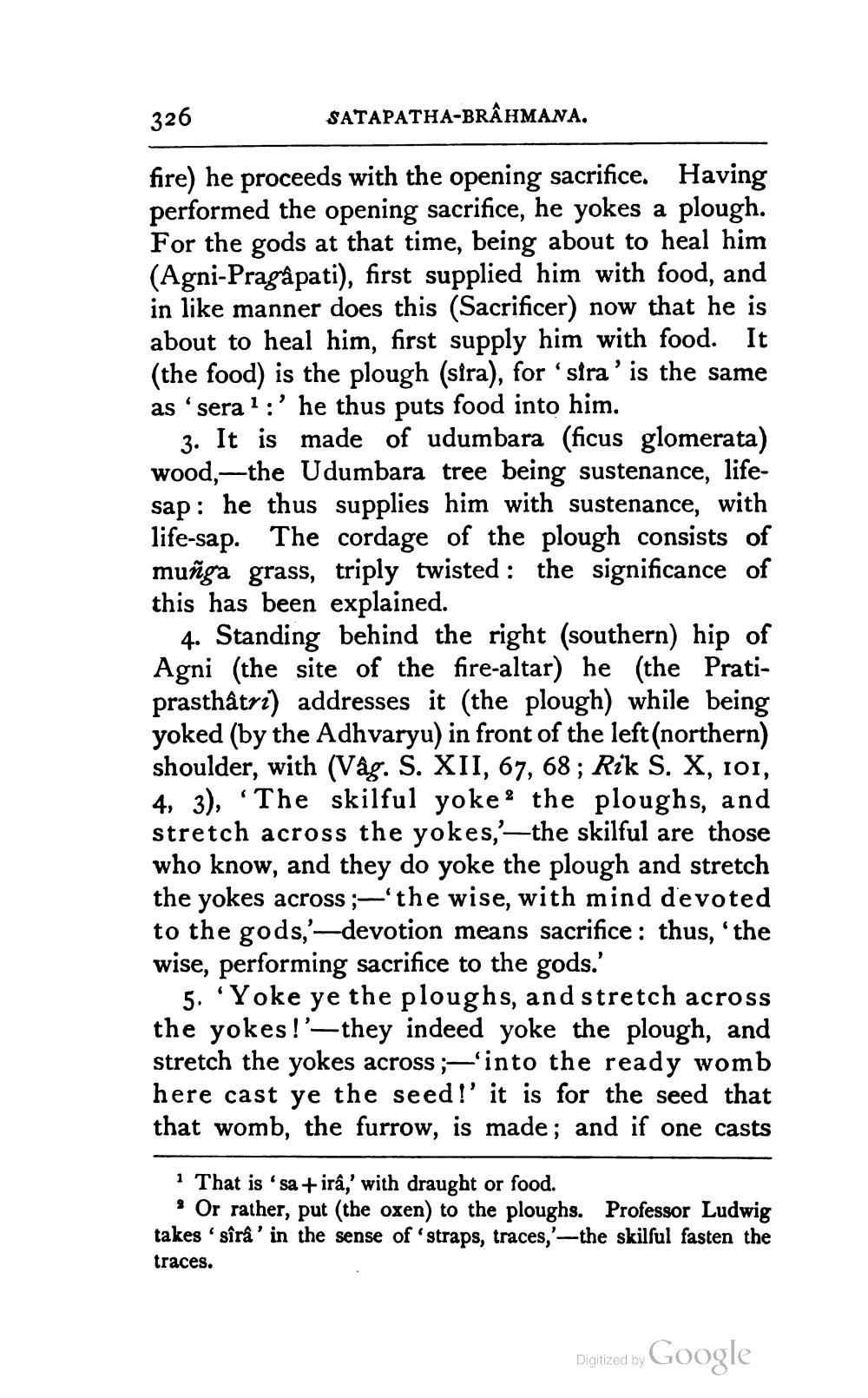________________
326
SATAPATHA-BRÂHMANA.
fire) he proceeds with the opening sacrifice. Having performed the opening sacrifice, he yokes a plough. For the gods at that time, being about to heal him (Agni-Pragâpati), first supplied him with food, and in like manner does this (Sacrificer) now that he is about to heal him, first supply him with food. It (the food) is the plough (sira), for 'sfra' is the same as 'sera ? :' he thus puts food into him.
3. It is made of udumbara (ficus glomerata) wood, -the Udumbara tree being sustenance, lifesap: he thus supplies him with sustenance, with life-sap. The cordage of the plough consists of muñga grass, triply twisted: the significance of this has been explained.
4. Standing behind the right (southern) hip of Agni (the site of the fire-altar) he (the Pratiprasthầtri) addresses it (the plough) while being yoked (by the Adhvaryu) in front of the left(northern) shoulder, with (Vag. S. XII, 67, 68; Rik S. X, 101, 4, 3), “The skilful yoke the ploughs, and stretch across the yokes,'—the skilful are those who know, and they do yoke the plough and stretch the yokes across ;-'the wise, with mind devoted to the gods,'-devotion means sacrifice: thus, 'the wise, performing sacrifice to the gods.'
5. 'Yoke ye the ploughs, and stretch across the yokes!'—they indeed yoke the plough, and stretch the yokes across ;-'into the ready womb here cast ye the seed!' it is for the seed that that womb, the furrow, is made; and if one casts
1 That is 'sa + irâ,' with draught or food.
Or rather, put (the oxen) to the ploughs. Professor Ludwig takes ' sîrâ' in the sense of straps, traces,'--the skilful fasten the traces.
Digitized by Google




